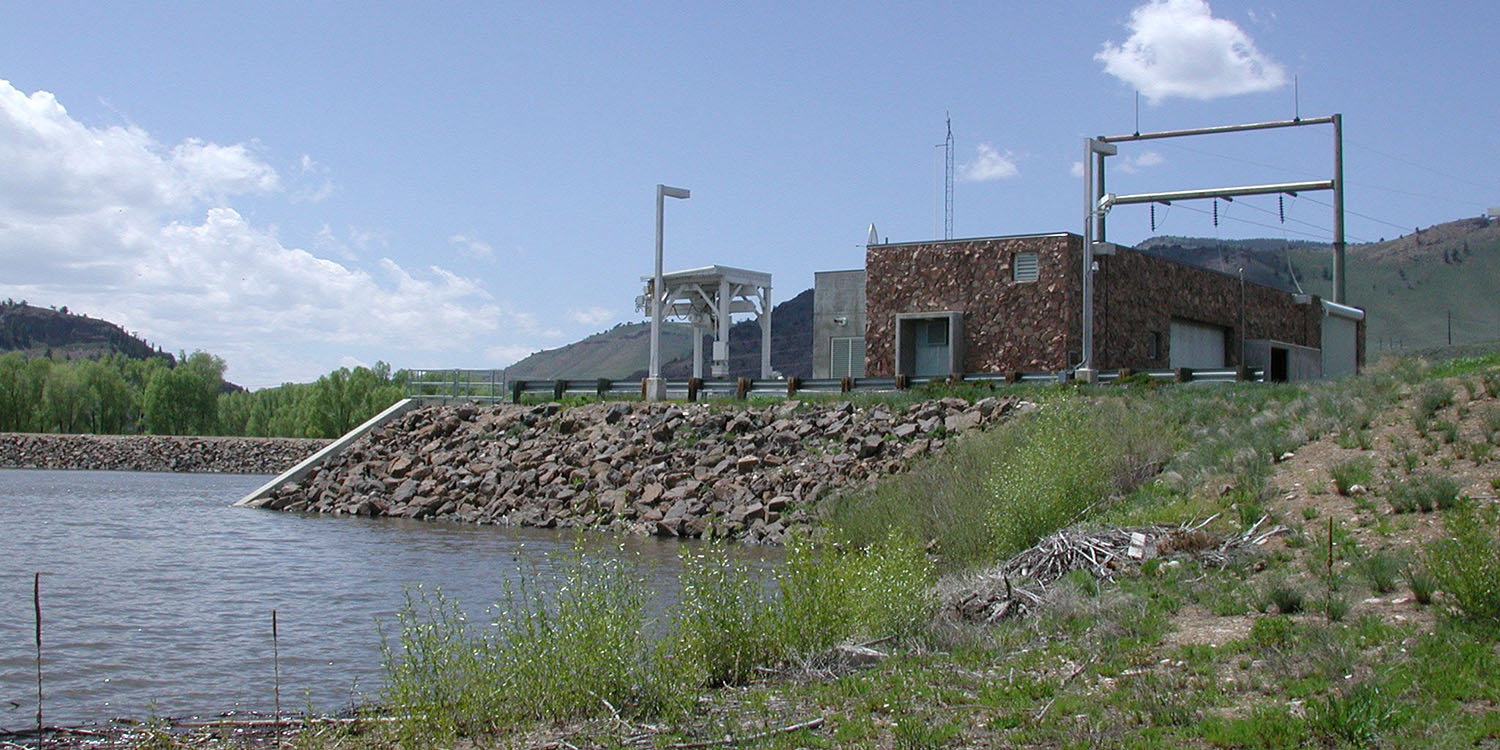Windy Gap Project
6 Miles of Pipeline from Windy Gap Reservoir to Lake Granby
600 Cubic Feet Per Second Maximum Discharge from Four Windy Gap Pumps
4 12,000 Horsepower Motors (48,000 Total Horsepower)
90 Cubic Feet Per Second Required Streamflow Below Windy Gap
255 Acre-Foot Reservoir
Water for Growth Through Windy Gap
Due to rapid population growth during the late 1960s, six Front Range communities formed the Northern Water Municipal Subdistrict in July 1970 to plan, finance, build and operate the Windy Gap Project. The six original Windy Gap participants included Boulder, Estes Park, Fort Collins, Greeley, Longmont and Loveland.
Windy Gap Project construction began in July 1981, was completed in 1985 and began delivering water to Municipal Subdistrict participants that same year.
The Windy Gap Project is located in Grand County on Colorado’s West Slope. The project consists of a diversion dam on the Colorado River, a 255-acre-foot reservoir, a pump plant and a six-mile pipeline to Lake Granby. Windy Gap water is pumped and stored in Lake Granby, part of the Colorado-Big Thompson Project, before it is delivered to water users via the C-BT system.
How the Project Works
Windy Gap Project water is pumped from Lake Granby via the Farr Pump Plant to the Granby Pump Canal, and then flows into Shadow Mountain Reservoir and through a connecting channel to Grand Lake.
At Grand Lake water enters the Adams Tunnel and flows beneath Rocky Mountain National Park. The water is then distributed to Windy Gap Project participants via a series of C-BT Project reservoirs, canals and pipelines.
Windy Gap Project Map

Windy Gap Pump Plant
During periods of high flows in the Colorado and Fraser rivers, water is pumped from Windy Gap Reservoir via the Windy Gap Pump Plant into Lake Granby, where it is stored for delivery through the C-BT Project facilities to water users on the Front Range. The Windy Gap Pump Plant and reservoir are located just west of the Town of Granby on the West Slope. Operated from a control center at the Farr Pump Plant, the Windy Gap Pump Plant pumps water through a 6-mile pipeline to Lake Granby.
Windy Gap Project construction began in July 1981. Completed in 1985, the project began delivering water to Municipal Subdistrict participants in July.
Chimney Hollow Reservoir Project
The Windy Gap Project was designed to deliver an average of 48,000 acre-feet of water per year to its participants. However, during wet cycles Lake Granby is often full, leaving little or no space for Windy Gap water, since the Colorado-Big Thompson has more senior water rights. Additional storage has been contemplated since the Windy Gap Project’s inception and today, nine municipalities, two water districts and a power provider work together to build a new reservoir to store this water and make the Windy Gap water deliveries more reliable.
As population in Northern Colorado continues to grow, the region needs collaborative projects to help meet its future water demands while also protecting the environment and wildlife, maintaining local food production, and preserving the region’s quality of life. Those are precisely the objectives of the Chimney Hollow Reservoir Project, which is the main component of the overall Windy Gap Firming Project. The new reservoir will be located just west of Carter Lake in southern Larimer County and will store 90,000 acre-feet of water when built — slightly smaller than neighboring Carter Lake (112,230 acre-feet). The project will provide a firm (more reliable) yield of 30,000 acre-feet annually, which will meet a portion of the future demands of the participants.
Learn More About Chimney Hollow Reservoir
